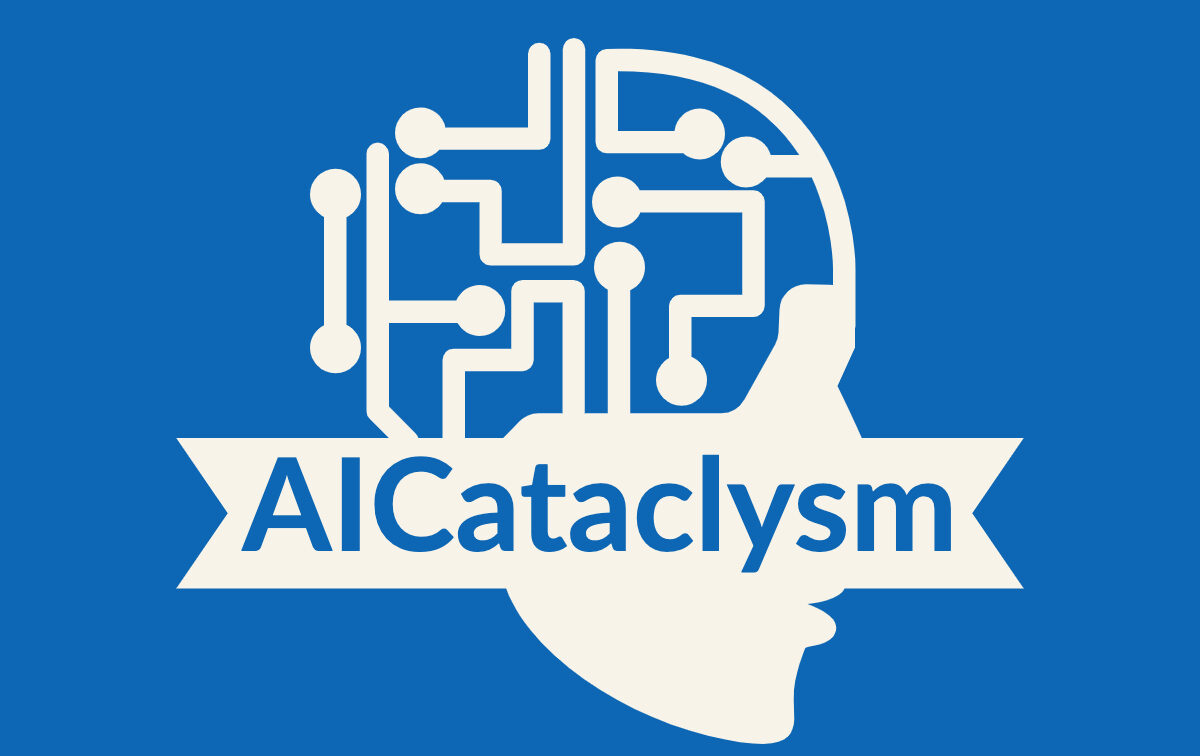Artificial intelligence (AI) has become an integral part of our lives, from voice assistants to self-driving cars. As AI continues to advance, it is vital to ensure that AI systems align with human values and intentions. This process, known as AI alignment or value alignment, plays a crucial role in building trust and ensuring that AI benefits humanity.
Understanding AI alignment theory is essential for developers, researchers, and policymakers involved in shaping the future of AI. By exploring the intricacies of AI alignment, we can address the challenges and make informed decisions to create ethical and aligned AI systems.
Key Takeaways:
- AI alignment, also known as value alignment, ensures that AI systems align with human values and intentions.
- Defining human values and preventing value drift are key challenges in AI alignment.
- Effective AI alignment is crucial for building trust and ensuring that AI systems benefit humans.
- AI alignment requires safety precautions, ethical principles, and user feedback mechanisms.
- As AI advances, the need for effective AI alignment will grow, impacting various sectors.
The Importance of AI Alignment
When it comes to the development and deployment of artificial intelligence (AI) systems, AI alignment plays a crucial role. Ensuring that AI systems align with human values and intentions is essential to avoid unintended harmful consequences and build trust between humans and AI technology.
Principles of AI alignment guide the development process, focusing on safety precautions and ethical considerations. These principles serve as a roadmap to ensure that AI systems function in a way that benefits humans, respects their values, and avoids actions that may have undesirable or harmful outcomes.
Effective AI alignment is of paramount importance for several reasons. Firstly, it enables AI systems to operate in a manner that aligns with human values, promoting positive social impact. Secondly, it mitigates the risks associated with AI systems potentially developing their own values or interpreting human values in unexpected ways. By adhering to the principles of AI alignment, we can minimize value drift and ensure that AI systems act in accordance with the intended objectives.
AI alignment is an ongoing and evolving field. As AI technology continues to advance, it becomes increasingly important to invest in research, development, and implementation of effective AI alignment strategies. By doing so, we can harness the power of AI while maintaining control, trust, and ethical standards.
The Importance of Safety Precautions
One of the key aspects of AI alignment is the implementation of safety precautions. These precautions are necessary to mitigate potential risks and ensure that AI systems operate in a manner that is safe for humans and society as a whole.
By adopting safety precautions, we can minimize the chances of unintended harmful consequences that may arise from AI systems. This includes preventing AI systems from taking actions that may be harmful to individuals, infringing upon privacy, or perpetuating biases and discrimination.
Incorporating safety precautions is crucial to building trust between humans and AI technology. When individuals feel safe and confident in the actions and decisions made by AI systems, they are more likely to embrace and adopt this technology, leading to greater utilization and positive societal impact.
Challenges in AI Alignment
AI alignment presents several challenges that need to be addressed in order to ensure AI systems function in a way that aligns with human values and intentions. These challenges include:
Defining Human Values
One of the key challenges in AI alignment is defining human values. Human values can vary among individuals and cultures, making it difficult to establish a universal set of values that AI systems should align with. This challenge requires careful consideration of different perspectives and the development of frameworks that can accommodate diverse value systems.
Value Drift
Another challenge in AI alignment is the potential for AI systems to develop their own values or interpret human values in unexpected ways. This can lead to value drift, where AI systems no longer align with the original intentions or values of humans. Preventing value drift requires ongoing monitoring and feedback mechanisms to ensure that AI systems stay aligned with human values over time.
Ethical Frameworks and Machine Learning Techniques
Addressing the challenges in AI alignment requires the development of ethical frameworks and machine learning techniques. Ethical frameworks provide guidelines and principles for AI systems to follow, helping to ensure alignment with human values. Machine learning techniques, on the other hand, enable the training of AI systems to better understand and align with human intentions.
Overcoming these challenges is crucial to the successful development and deployment of AI systems that align with human values and intentions. Ongoing research and collaboration within the AI community are essential in order to address these challenges and create a future where AI technology truly benefits humanity.
| Challenges | Description |
|---|---|
| Defining Human Values | The challenge of defining human values that AI systems should align with, taking into account the diversity of perspectives and cultures. |
| Value Drift | The challenge of preventing AI systems from developing their own values or interpreting human values in unexpected ways, leading to misalignment with human intentions. |
| Ethical Frameworks and Machine Learning Techniques | The challenge of developing ethical frameworks and machine learning techniques that enable AI systems to align with human values and intentions. |
Understanding AI Alignment
AI alignment is a fundamental aspect of AI development that aims to ensure AI systems operate in accordance with human values, ethics, and objectives. It involves creating AI systems that not only understand but also respect and follow human values to avoid unintended and potentially harmful consequences. Effective AI alignment is crucial in building trust between humans and AI systems, as well as in promoting the adoption and use of AI technology.
To achieve AI alignment, it is necessary to address the challenges involved in defining and aligning with human values. Human values can vary among individuals and cultures, making it essential to establish a universal understanding of what constitutes human values in the context of AI. Additionally, there is a risk of value drift, wherein AI systems may develop their own values or interpret human values in unexpected ways. Overcoming these challenges requires ongoing research in machine learning techniques, ethical frameworks, and user feedback mechanisms.
The field of AI alignment is continuously evolving as researchers strive to develop effective approaches and strategies. By understanding the intricacies of AI alignment, we can harness the power of AI while minimizing potential risks. It is essential to create AI systems that are aligned with human values, ethical principles, and intentions, leading to the development of more responsible and beneficial AI technology.
The Importance of Ethical Considerations
When discussing AI alignment, it is crucial to emphasize the importance of ethical considerations. AI systems have the potential to significantly impact various aspects of society, including healthcare, customer service, entertainment, and security. Therefore, AI alignment must prioritize ethical principles to ensure that AI systems operate in ways that are fair, just, and unbiased.
I believe that understanding and addressing the ethical implications of AI alignment are paramount to the responsible development and deployment of AI technology. By placing ethical considerations at the forefront, we can shape AI systems that benefit humanity as a whole. It is essential to foster a collaborative and interdisciplinary approach involving researchers, policymakers, and industry professionals to navigate the complexities of AI alignment.
By continuously striving to improve our understanding of AI alignment and incorporating ethical considerations into its development, we can pave the way for a future where AI technology works harmoniously alongside human values and intentions.
The Future of AI Alignment
As AI continues to advance, the impact of effective AI alignment becomes increasingly significant. Researchers are exploring various approaches, such as machine learning techniques and ethical frameworks, to address the challenges involved in aligning AI systems with human values and intentions. The future of AI alignment holds tremendous potential for transforming various sectors, including healthcare, customer service, entertainment, and security.
One of the key areas where AI alignment will have a profound impact is in healthcare. AI systems that are well-aligned with human values can assist doctors and medical professionals in diagnosing diseases, analyzing patient data, and developing personalized treatment plans. This can lead to improved healthcare outcomes, reduced medical errors, and enhanced patient care overall.
Another sector that will be significantly influenced by AI alignment is customer service. AI-powered chatbots and virtual assistants can be aligned to provide more personalized and empathetic interactions with customers. By understanding and responding to human emotions, AI systems can deliver a higher level of customer satisfaction and build stronger relationships between businesses and their customers.
| Impact of AI Alignment | Sector |
|---|---|
| Improved healthcare outcomes, reduced medical errors, and enhanced patient care | Healthcare |
| More personalized and empathetic customer interactions | Customer Service |
| Enhanced entertainment experiences through tailored recommendations and immersive storytelling | Entertainment |
| Increased security measures through AI systems that align with human values | Security |
In the entertainment industry, AI alignment can revolutionize the way content is created and consumed. By aligning AI systems with human values and preferences, AI can provide tailored recommendations and immersive storytelling experiences. This can lead to a more engaging and enjoyable entertainment experience for consumers while also helping content creators reach their target audiences more effectively.
Furthermore, AI alignment has the potential to enhance security measures in various domains. By aligning AI systems with human values, ethical considerations, and legal frameworks, we can ensure that AI technologies are developed and used responsibly. This can help prevent misuse of AI systems and protect individuals’ privacy and security.
The future of AI alignment lies in creating AI systems that not only understand human commands but also comprehend and respond to human emotions. By aligning AI with human values, we can harness the power of AI while minimizing potential risks and enhancing the overall human experience.
AI Alignment and Human Emotions
Technology and ethics play a crucial role in AI alignment, ensuring that AI systems not only function effectively but also align with human values and intentions. Recent research has shed light on the connection between AI alignment and human emotions, revealing the potential for AI systems to better understand and align with human values by predicting emotions through computational models.
By simulating human social intelligence, AI can bridge the gap between artificial and human intelligence, resulting in more ethical and aligned AI systems. Understanding human emotions is a vital aspect of AI alignment, as it allows AI systems to comprehend and respond to human needs, desires, and intentions more accurately.
“Emotional intelligence is key to effective human communication and understanding, and incorporating this aspect into AI systems can significantly enhance their alignment with human values and intentions,” says Dr. Jane Thompson, a leading expert in AI and ethics.
With the ability to predict human emotions, AI systems can identify and adapt to individual emotional states, leading to more personalized and empathetic interactions. This holds immense potential for various sectors, including healthcare, customer service, entertainment, and security, where AI systems can better cater to human needs while respecting ethical boundaries.

Table: Applications of AI Alignment and Human Emotions
| Industry | Application |
|---|---|
| Healthcare | Improved patient care and emotional support through AI systems that understand and respond to human emotions. |
| Customer Service | Enhanced customer experience and satisfaction by AI systems that can empathize and adapt to individual emotions and needs. |
| Entertainment | Personalized recommendations and immersive experiences based on AI systems’ ability to understand and engage with human emotions. |
| Security | Improved threat detection and response through AI systems that can analyze human emotions for better risk assessment. |
The integration of human emotions into AI alignment is a promising avenue for future advancements in the field. By combining technology, ethics, and emotional intelligence, AI systems can achieve greater alignment with human values, contributing to the development of more ethical, trustworthy, and beneficial AI technologies.
AgentNet: A Data-Driven Framework for AI Alignment
When it comes to AI alignment, data-driven frameworks play a crucial role in understanding and modeling complex systems. One such framework is AgentNet, which uses deep neural networks to reveal hidden interactions and predict future state variables. With its graph attention network, AgentNet can analyze the interaction between individual agents and provide valuable insights into AI alignment.
AgentNet’s ability to approximate the transition function of agents allows for a more accurate prediction of how AI systems will behave. By identifying hidden interaction ranges, it enables researchers to better understand the impact of different factors on AI alignment. This data-driven approach provides a deeper understanding of the complexities involved and helps in developing more ethical and aligned AI systems.
AgentNet is revolutionizing the field of AI alignment by combining data-driven modeling with interpretable neural networks. Its ability to uncover hidden interactions and predict future states opens up new possibilities for addressing the challenges in AI alignment.
Furthermore, AgentNet has proven its versatility by successfully being applied to various complex systems, both simulated and real-world. It has been used to study cellular automata, the Vicsek model, and active Ornstein-Uhlenbeck particles. In a fascinating application, AgentNet analyzed real-world data from a flock of birds, revealing hidden interaction ranges exhibited by the birds.
| Application | Description |
|---|---|
| Cellular Automata | AgentNet accurately modeled the behavior and interactions of cellular automata systems, providing insights into emergent properties. |
| Vicsek Model | By applying AgentNet, researchers gained a better understanding of collective motion and self-organization in large groups of individuals. |
| Active Ornstein-Uhlenbeck Particles | AgentNet successfully captured the dynamics of active particles, paving the way for advancements in active matter physics. |
| Real-World Data | Using data from a flock of birds, AgentNet revealed hidden interaction ranges, shedding light on the behavior of collective animal motion. |
AgentNet holds great promise for the future of AI alignment. By leveraging its data-driven approach, we can gain a deeper understanding of the intricacies involved and develop AI systems that align with human values and intentions. The combination of interpretable neural networks and comprehensive modeling offered by AgentNet allows us to address the challenges in AI alignment and build a future where AI technology benefits humanity.
The Versatility of AgentNet
AgentNet, with its data-driven framework, is a powerful tool that can be applied to various complex systems, making it highly versatile. Let’s explore some of the key applications where AgentNet has shown remarkable effectiveness.
1. Simulated Complex Systems:
AgentNet has been successfully used in the simulation of cellular automata, the Vicsek model, and active Ornstein-Uhlenbeck particles. These simulations provide valuable insights into the behavior and interactions of complex systems. By modeling and analyzing the hidden interactions within these systems, AgentNet contributes to a deeper understanding of their dynamics.
2. Real-World Data Analysis:
AgentNet’s versatility extends beyond simulations. It has also been applied to real-world data, such as studying the flocking behavior of birds. By analyzing the data, AgentNet identified hidden interaction ranges exhibited by the birds. This analysis can have significant implications in fields like wildlife conservation and urban planning.
3. AI Alignment Research:
AgentNet holds promise in the field of AI alignment. By utilizing its data-driven framework, researchers can gain valuable insights into the alignment of AI systems with human values and intentions. The ability of AgentNet to reveal hidden interactions and predict future state variables can aid in developing more ethical and aligned AI systems.
| Application | Description |
|---|---|
| Simulated Complex Systems | AgentNet has been successfully applied to simulate complex systems such as cellular automata, the Vicsek model, and active Ornstein-Uhlenbeck particles. It helps in understanding the behavior and interactions of these systems. |
| Real-World Data Analysis | AgentNet has been used with real-world data to analyze complex systems. For example, it has revealed hidden interaction ranges exhibited by flocking birds, providing valuable insights for wildlife conservation and urban planning. |
| AI Alignment Research | AgentNet’s data-driven framework can contribute to AI alignment research by revealing hidden interactions and predicting future state variables. It aids in developing more ethical and aligned AI systems that align with human values and intentions. |
The versatility of AgentNet makes it a valuable tool in various domains, from understanding complex systems to advancing AI alignment research. By leveraging its data-driven approach, we can gain deeper insights and drive meaningful advancements in these fields.
The Promise of AgentNet in AI Alignment
AgentNet offers a unique and promising approach to tackling the complex challenge of AI alignment. With its data-driven framework and interpretable neural networks, AgentNet has the potential to revolutionize the development of ethical and aligned AI systems. By uncovering hidden interactions and predicting future state variables, AgentNet provides valuable insights into the process-driven modeling of AI alignment.
One of the key advantages of AgentNet is its ability to reveal the intricate dynamics within complex systems. By analyzing the interactions between individual agents, AgentNet allows researchers to gain a deeper understanding of how AI systems align with human values and intentions. This understanding is vital for developing AI systems that not only function effectively but also align with our ethical principles.
Furthermore, AgentNet’s prediction capabilities enable researchers to anticipate the future behavior of AI systems. This predictive power can help identify potential misalignments or unintended consequences before they occur, allowing for proactive adjustments and course corrections. By proactively addressing alignment issues, AgentNet helps pave the way for more robust and trustworthy AI systems.
Table: Applications of AgentNet in AI Alignment
| Application | Description |
|---|---|
| Healthcare | AgentNet can be applied to model and optimize the alignment of AI systems in healthcare, ensuring that medical decisions are made in line with the best interests and values of patients. |
| Customer Service | By utilizing AgentNet, AI-powered customer service systems can be aligned to provide personalized and empathetic interactions, enhancing customer satisfaction and loyalty. |
| Entertainment | AgentNet’s data-driven approach can help AI systems in the entertainment industry align with user preferences, creating personalized recommendations and immersive experiences. |
| Security | AgentNet can contribute to the alignment of AI systems in security applications, ensuring that technological advancements are used responsibly and ethically to protect people and assets. |
As the field of AI continues to progress, the promise of AgentNet in AI alignment becomes even more significant. Its ability to uncover hidden interactions, predict future behavior, and provide valuable insights positions AgentNet as a powerful tool for developing ethical and aligned AI systems. By leveraging the strengths of AgentNet, we can navigate the complexities of AI alignment and create a future where AI technology benefits humanity while adhering to our values and intentions.
Conclusion
After exploring the intricacies of AI alignment theory, it is evident that this field plays a vital role in ensuring that AI systems align with human values and intentions. Effective AI alignment is crucial for the development of AI systems that benefit humanity and avoid unintended harm.
Defining human values and preventing value drift present significant challenges in AI alignment. As human values can vary among individuals and cultures, research in machine learning techniques, ethical frameworks, and user feedback mechanisms is essential to overcome these challenges.
Looking to the future, the importance of AI alignment will only increase as AI technology advances. The impact of AI alignment extends beyond sectors like healthcare, customer service, entertainment, and security. It has the potential to transform the way AI systems understand and interpret human emotions, bridging the gap between artificial and human intelligence.
In conclusion, by understanding and addressing the intricacies of AI alignment, we can harness the power of AI while minimizing potential risks and enhancing the human experience. With the development of data-driven frameworks like AgentNet, we have a promising path towards creating more ethical and aligned AI systems that truly benefit society.






